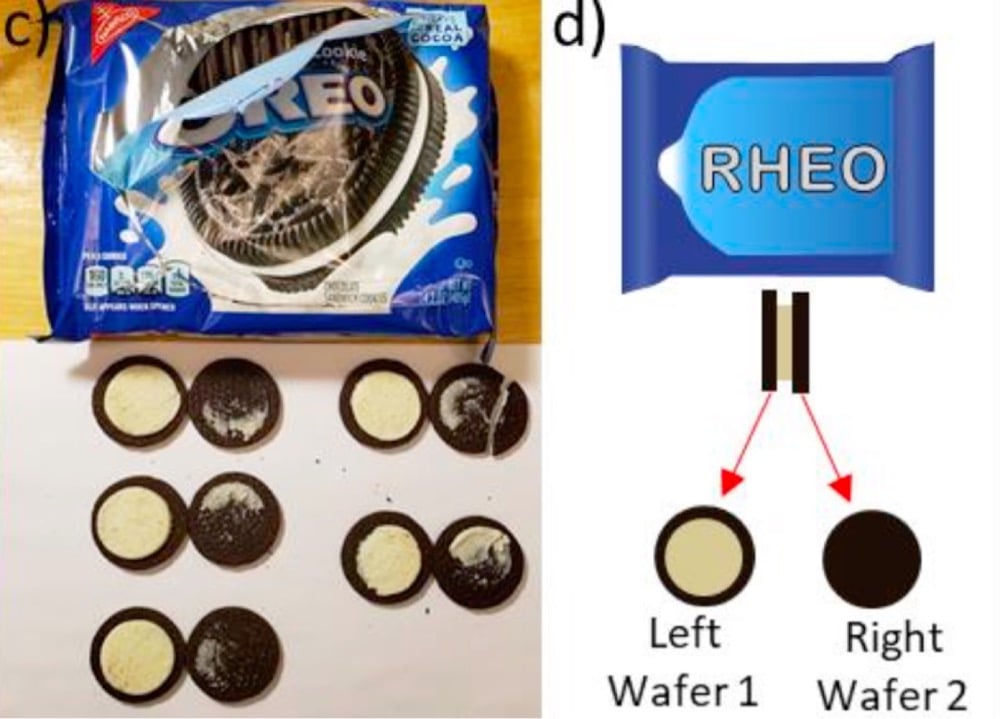The Fluid Dynamics of Oreo Cookie Twisting

You may have noticed, while twisting apart Oreos (aka the world’s favorite “trilayer laminate composite”) to get at the creme inside, that the creme tends to mostly stick to one half of the cookie. MIT graudate student Crystal Owens decided to study this phenomenon and has co-authored a paper about the failure mechanics of the Oreo’s layer of creme in the journal Physics of Fluid. From Ars Technica:
“I had in my mind that if you twist the Oreos perfectly, you should split the creme perfectly in the middle,” said Owens. “But what actually happens is the creme almost always comes off of one side.” The experiments showed that this creme distribution is not affected by rotation rate, the amount of creme filling, or the flavor. Rather, the pre-existing level of adhesion between the creme and the chocolate wafers seemed to be the determining factor. Cookies from the package within any one box typically separated with the same preferred orientation most of the time. This suggests that it has something to do with how the cookies are manufactured and then oriented during packaging, as well as how they are stored.
They even built a 3D printed “oreometer” so that people can study this phenomenon without using an expensive rheometer.
As a very amateur kitchen scientist myself, the Oreo situation reminds me of what happens when you try to tear three connected pieces of paper towel apart in one move by pulling on the outside pieces in opposite directions: the middle piece of paper towel almost always ends up attached to one of the outside pieces. In fact, in extensive testing over the past 3-4 years, this maneuver has only separated all three pieces a few times.1 (thx, eric)
There’s always a lot of hootin’ and hollerin’ and victory laps around the kitchen when a perfect pull happens. It’s a rare event!↩





Stay Connected